My body craves bread from a deep desire ingrained in me long ago. As with most people, I have childhood food memories that have stuck around throughout my life and bring me comfort in ways that are hard to explain or rationalize. It’s like our body’s way of guiding us to a safe place of comfort when little else feels like it’s within our control. When I was a child, nearly every Saturday morning in the summer, my mom and I would drive our little fishing boat the mile across the St. Lawrence River where we would dock, check in with Canadian customs and then hike up a little hill through the town farmers market to our favorite bakery, Tate’s — all in the name of a loaf of bread. The entire trip I’d be anxiously waiting, visioning my chance to pick out the most beautiful of all the baguettes, cradled in long brown parchment paper on a tall wooden rack, smelling like the sweetest of all scents. After securing the perfect loaf, paying and loading up on a few other pastries, we would begin to make our way back to the boat, intentionally at a much slower pace. As we would mosey down the sidewalk moving past people going here and there, Mom and I would take turns ripping hunks of the baguette, letting it slowly melt in our mouths — Mom each time declaring, “Just like the way they do it in France.”
At any point in my life, I’ve never felt more satisfied, physically or emotionally, than after eating a piece of bread. Whether it was nature or nurture, my body continues to need bread like it needs water, and my body seeks it out and finds comfort wherever I’m able to find it. And though I’m seeking out slightly different kinds of bread than I used to and my perception of what a “good” loaf consists of has changed, the nostalgia and the emotion of ripping into a warm baguette with the most perfectly crisp crust and soft pillowy interior remains.

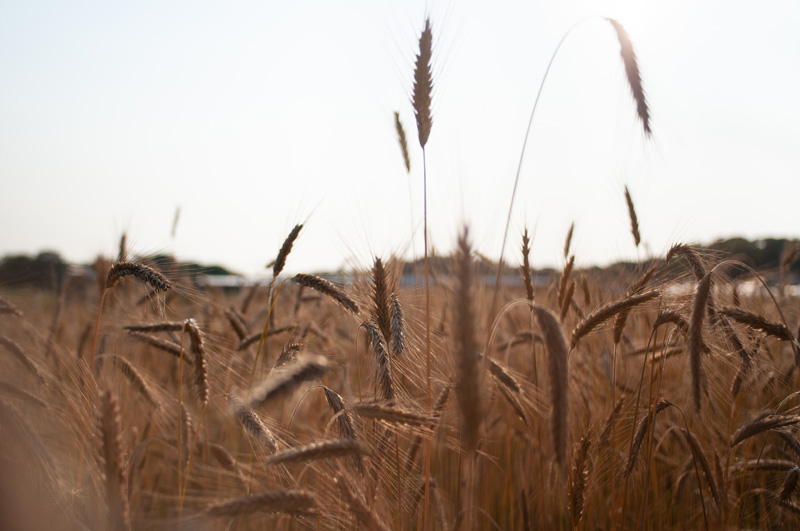
So how has my idea of what “good” bread is, evolved? Well, being a farmer, I can’t seem to help but wonder… necessitate the need to know where, and how, and by whom the food that I consume came to be. And for me, bread has one of the most interesting paths to its final form. It always involves a thoughtful farmer, a meticulous miller, and a baker intimately in tune with their grain. Rarely in our current food system do these three realms interact, but for the best bread… they must.
Let’s start with the farmer:
“Eating is an agricultural act,” says writer and farmer Wendell Berry, and that doesn’t end at fruits and vegetables. Grain is a staple in our diets as humans, and it too exists for readied consumption as a direct result of agriculture. So just as important as it is with vegetables to know your farmer, grain too deserves this encouragement. Because when you know how your grain is grown, you know how the soil is being treated, how the farmers are treated and what it ultimately takes to put that loaf of bread on your table (spoiler… it takes a whole lot), your appreciation grows. It also often results in grain that has much higher nutritional value and also, always my favorite part — better flavor.
For most people though, knowing your farmer is more difficult in terms of grain than it is for other agricultural products. Grain farms tend to operate on extreme scales and are, even more so than most other crops, consolidated into isolated regions where grain grows best, where it can be grown cheaply, and where it can be shipped easily to the rest of the country or world. Grain, like vegetables, however, has a history of success in a wide range of regions often based on the selection of particularly well-suited varieties to their climates. Variety selection based on genetics is key, as with most crops, and remains the greatest tool a farmer can use to help drive what little control is naturally available in their success. Growing, however, is only one part of the equation — infrastructure is a whole other, and it is the infrastructure that is often the factor that pushes so many farms to need to get big or get out. Growing grain takes a great deal of specialized equipment and unless you’re growing very large amounts of it, it just doesn’t make sense economically. The land, a tractor with a drill seeder to seed the grain, a combine to harvest it, large bins and fans to dry it, a sorter to clean it and separate it from weed seeds and other contaminants, and finally a means to store it all away from critters and pests that could easily destroy it.
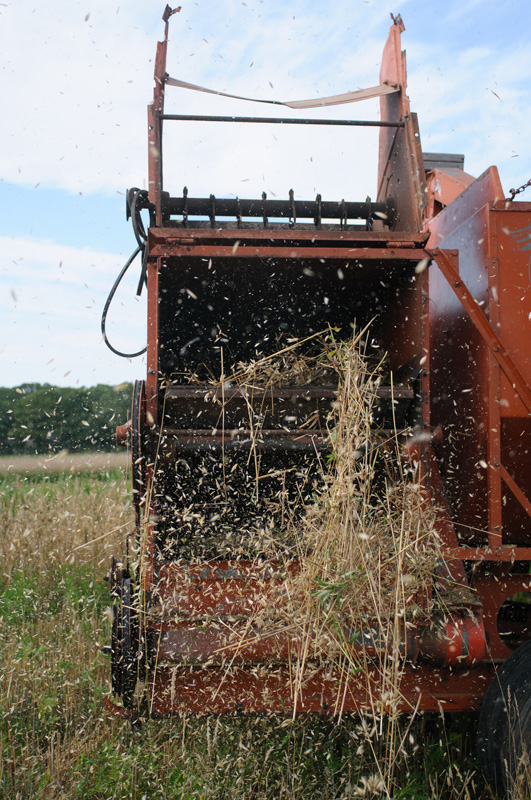
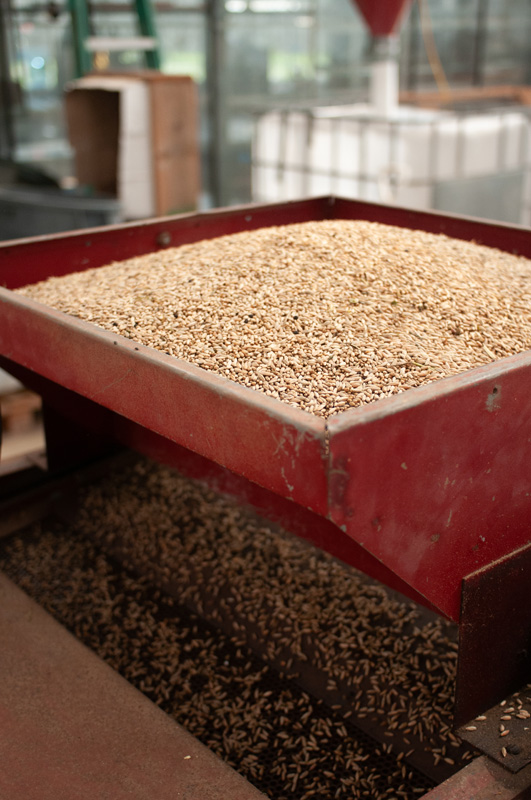
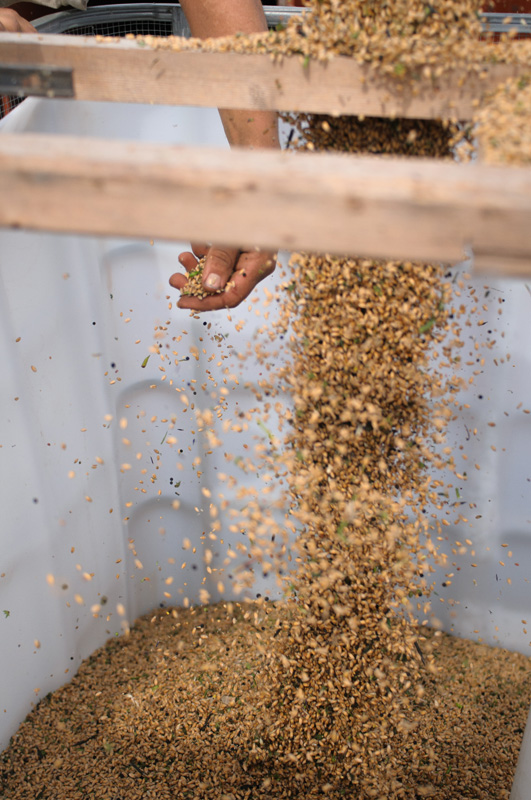
The miller:
And then there’s the mill — another piece of infrastructure that has seen the incentives of scaling up wipe out accessibility of mills to the people. Milling is the seemingly simple process of breaking down a kernel of grain into a more digestible and multi-use form — flour. It’s one that makes nutrients more readily available for absorption into the body, and one that when added with water and salt, gets you something much greater than the sum of its parts: Bread. Milling is a skill, but it’s also an artform, and can greatly impact the integrity of the flour and bread if not done with deep knowledge of the anatomy and unique characteristics of different grains and how best each of them are used. Milling done well leads to a more nutritious and significantly more delicious end product, which speaks to the level of importance it holds to the greater process of bread making. Remember, grain is a living thing — it’s a seed after all, and though it may be less perishable than a carrot, it still will continue to lose life after harvested (and especially after milling) and should never be considered a shelf stable product. If it is, it has likely been sifted, bleached, and stripped of all nutritional content, all which is living, void of anything resembling actual food to be nourished by.
If you’ve ever driven around the Island and really kept your eyes open, you will have probably spotted the remnants of old mill stones — now retired to road markers or garden sculptures. Once staples of communities, stone mills, often run by water, offered a place for people growing their own grain, corn, nuts, and seeds to share in infrastructure. These mills allowed for greater accessibility to people growing their own staples at small scales. One such, the Old Mill in West Tisbury, still stands, though not in use as a working mill, but as a reminder of how common it was to have mills scattered throughout a community of growers. Today, there are incredible craftsmen revitalizing the work associated with building mills that are then slowly becoming more common in bakery spaces of small communities, allowing for a way to revitalize the intimate connection between bakers and their grain. New American Stone Mills in Elmore, Vermont, is one of those places, where Andrew Heyn builds beautiful stone mills by hand. We are lucky enough to be receiving one of his mills at Beetlebung Farm later this winter where we can hopefully help begin to support more farmers in their pursuit to grow grain and potentially foster a new local grain community.
The baker:
Bakeries and their bakers serve as the voices of the many hands before them — the seed breeder, the farmer, and the miller. They serve as really the only place where people are exposed to better understanding the origins of their bread and what it means for the end product’s taste and nutritional content. A baker who understands and accepts the nuances and inconsistencies that come with supporting varied sources of grain, and one that is willing to lean into these differences, is one who is directly supporting a sustainable and healthy grain economy. Just like the farmer in their field, a baker in tune this deeply with their craft is one that prioritizes observation, has patience, and a level of humbleness that allows them to accept that being in absolute control is not the priority. It is the baker’s job to be the conduit between good farming and good food.

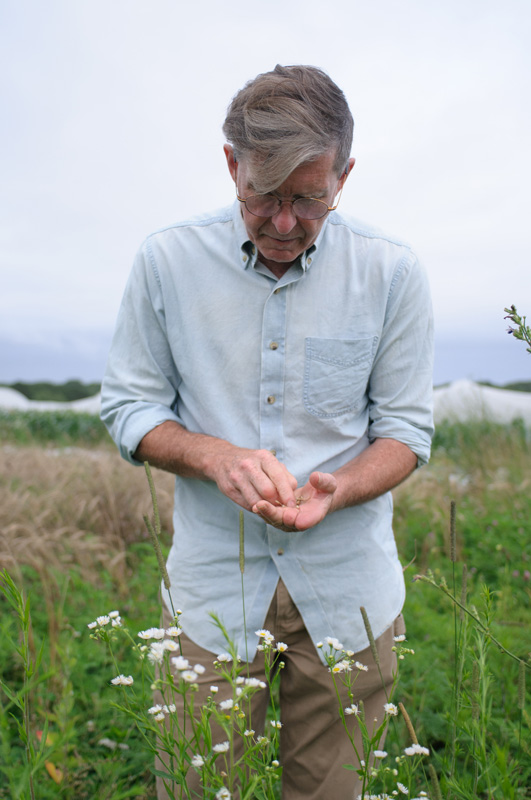
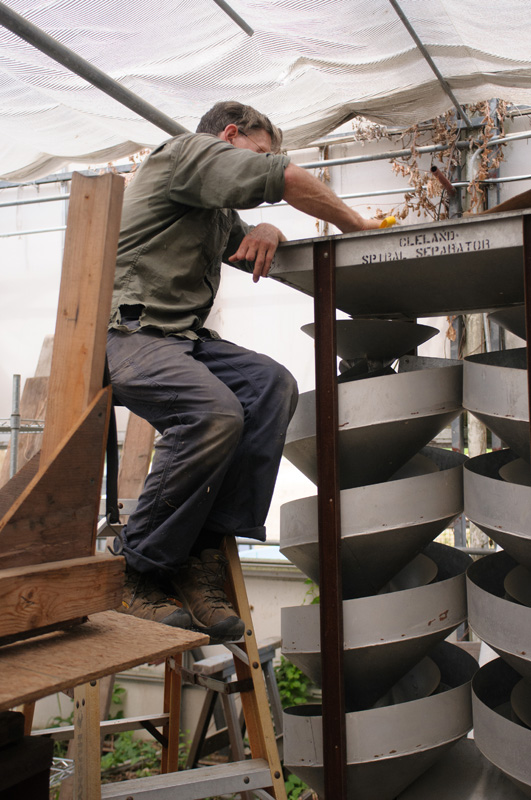
Dan Sternbach
Despite all of the hurdles that exist in growing small-scale grain, one farmer persists. Dan Sternbach has been growing grain for over a decade on the Island, hoping to remind people the value of an industry long forgotten here. Dan is someone you can tell is motivated by a passion, and you’d have to be in order to do something that just doesn’t make much economic sense. As with most agricultural endeavors, a seemingly simple process of growing grain becomes immediately complicated by the nuances. He approaches growing from a humble position, constantly open to learning, wondering, and experimenting in new ways. But he also approaches it from a deeply intelligent way, one that only comes from seasons of observing his crop, making adjustments, collaborating with others, and research. Constant fluctuations and unpredictability in weather, turkey, goose, and deer damage to a growing crop, constant weed pressure, unrelenting wet harvest seasons, broken equipment, pests pressures in storage — the list goes on of possible problems Dan must face in trying to achieve a successful growing season. But he is determined. All in the name of keeping grain growing alive on the Island. Wading through his fields of chest-high rye with him, you can’t help but acknowledge how undoubtedly beautiful this crop really is, but what’s more is that this grain also has a deeper context and a story to tell; one of unique challenges of the Island, one of the history of genetics in the varieties he’s selected, and one of a very personal perseverance. He currently grows his wheat, rye, and oats on land at the Island Grown Initiative farm and sells it through the farmstead at Mermaid Farm and Dairy. It is an often thankless job, but Dan does it with so much heart and desire to share, one can’t help but be inspired by his dedication and will.
Though there have been moments in the Island’s history of excitement over revitalizing the grain economy, the realities of what that has meant around the barriers to funding of infrastructure and equipment and finding people willing to invest have stalled things. Even Dan still questions from year to year the viability of keeping his dream alive. Because grain is a commodity, a fact that has made it an interchangeable product to buy, sell, and trade — one void of cultural relevance, an origin story, or personal connection to the land or the grower, it is cheap. It is almost impossible for a farmer to make any money from growing grain on a small scale when it has to compete with commodity prices. But grain grown well is far from a sterile product lacking diverse qualities in taste and baking ability. Grain grown in soil that has been cared for is grain with terroir — grain that tastes of a place. Though it is beautiful and it is delicious, grain is not sexy. And the knowledge gap around the impact on nutrition and flavor in grain grown regeneratively and milled fresh is vast. Even more vast than vegetables. But what does it matter to have locally grown and milled grain in our community? Well, without it, a disconnect between people and their food is created, one that shields us from the realities associated with grain production and the intimate connection that we’re lucky to have with so much of our Island food.


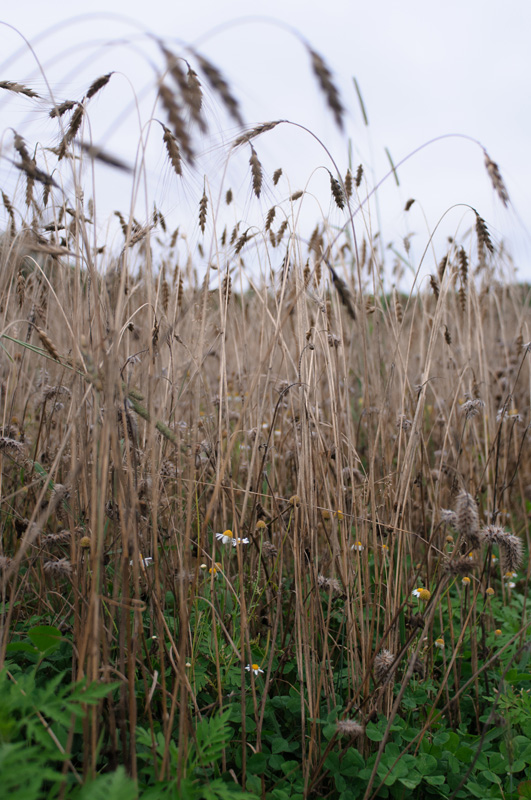
More and more people are asking where their vegetables come from, how they’re grown and what variety they are. I don’t, however, hear that same conversation around grain, around loaves of bread, around croissants. As we build our small bakery and mill in the barn at Beetlebung Farm, as I continue to connect with Dan and other farmers throughout the region inquiring about buying their grain, I am so inspired that these farmers chose to do what they’re doing. They do it because they believe — they believe that grain is important enough to keep local, to grow at relatively small scales that can better protect the ecosystem which it is surrounded by. They believe in rotations where they can balance the health of the soil with organic forms of nutrients through cover cropping and grazing. They believe in flour that is living and has the power to truly feed us, not make us sick. I believe this too. I believe that people can be as passionate about knowing the variety of their locally grown bag of Danko rye flour as they are about their Mokum carrots. This Island is a truly inspiring place that celebrates agriculture and those that devote their lives to it. Let’s create the demand that supports a viable grain economy on the Island. Let’s put meaning back into that Saturday morning baguette that we have the privilege of ripping into, and smelling that sweet, distant smell of the soil that grew the wheat on the very land that we all call home here on the Island.

